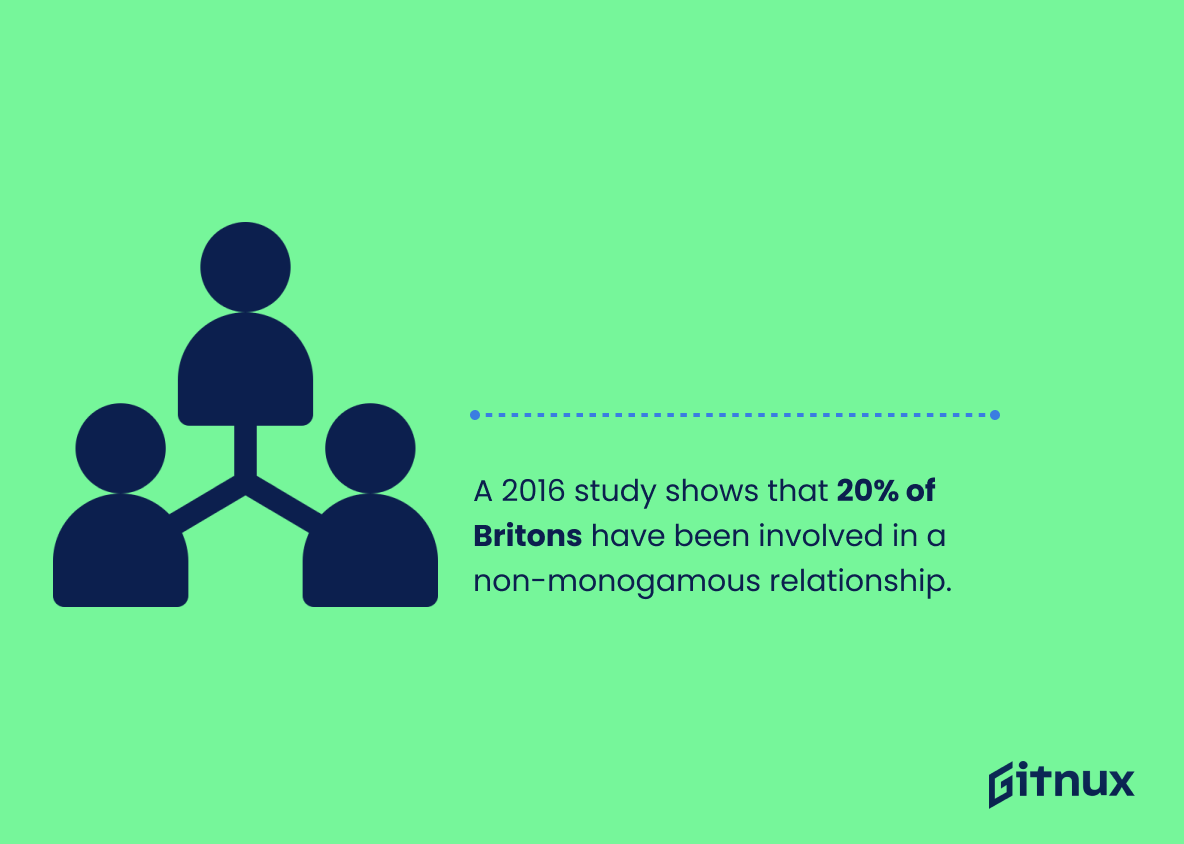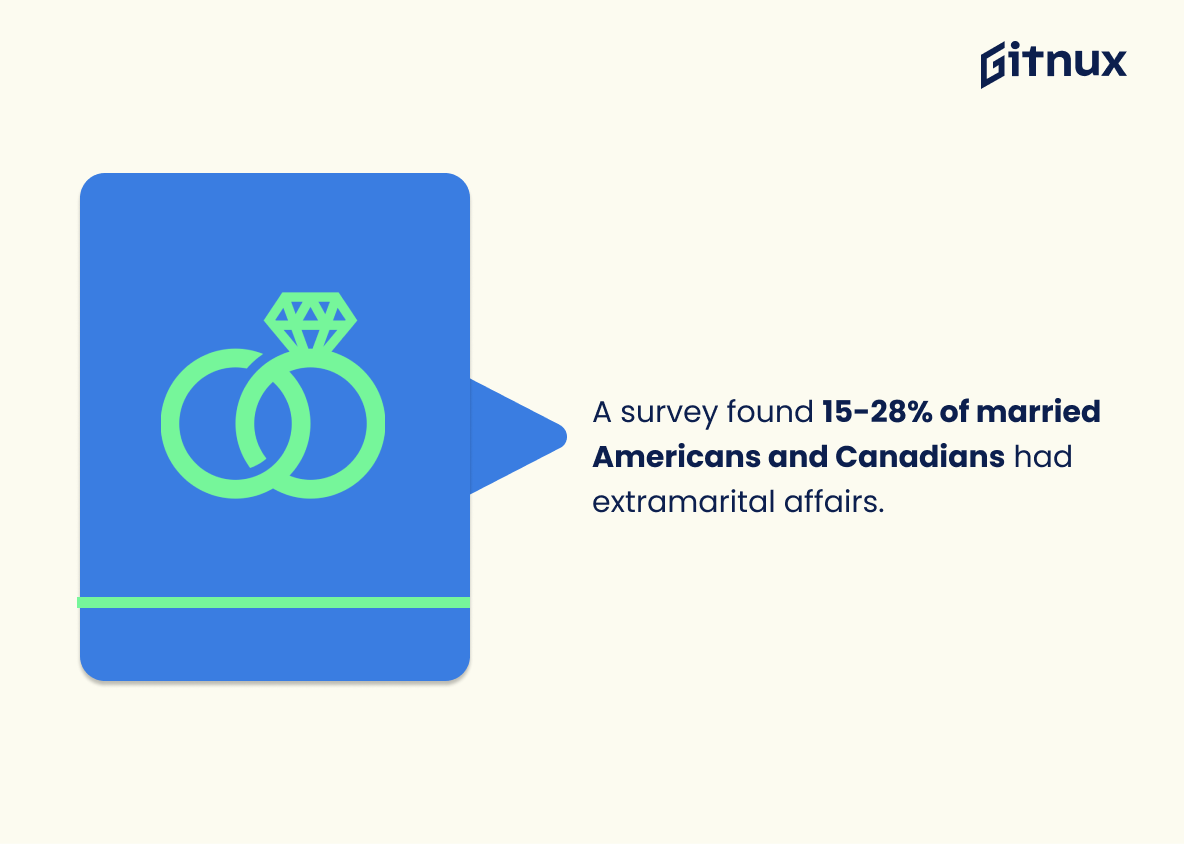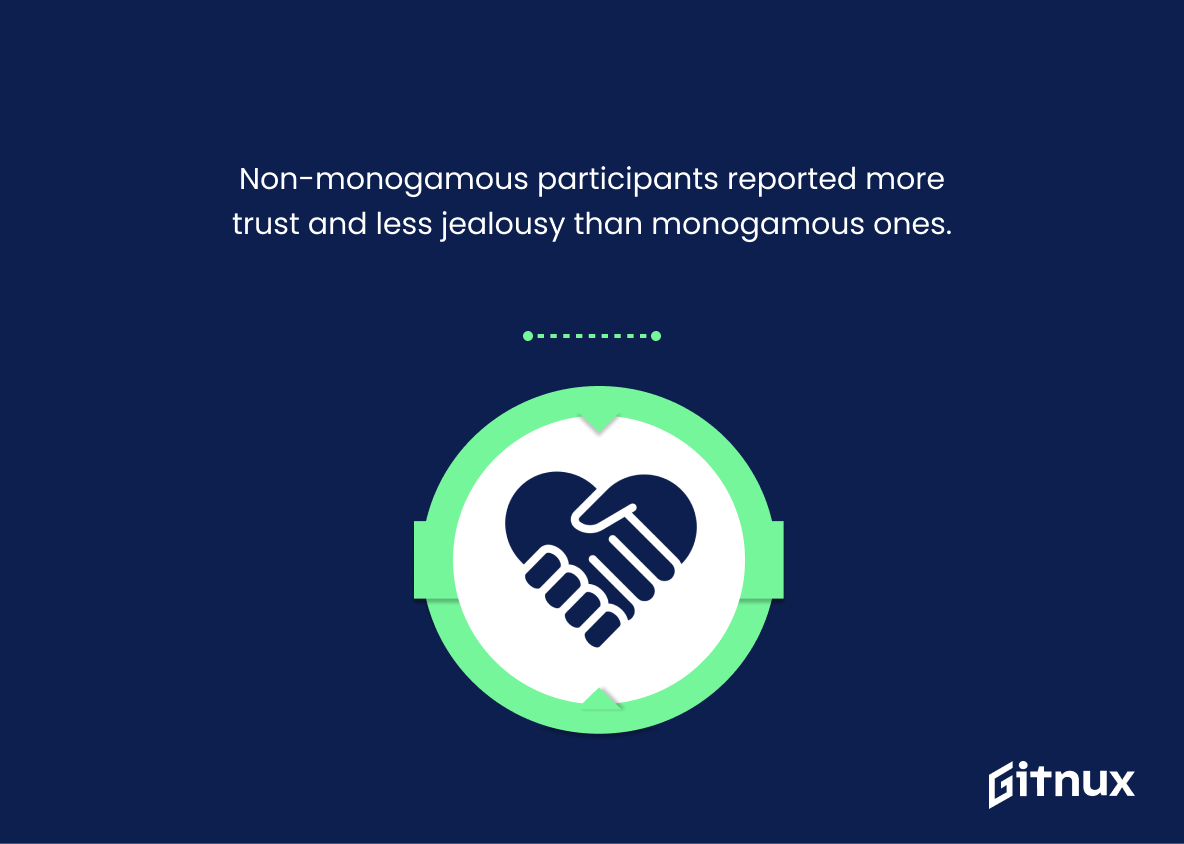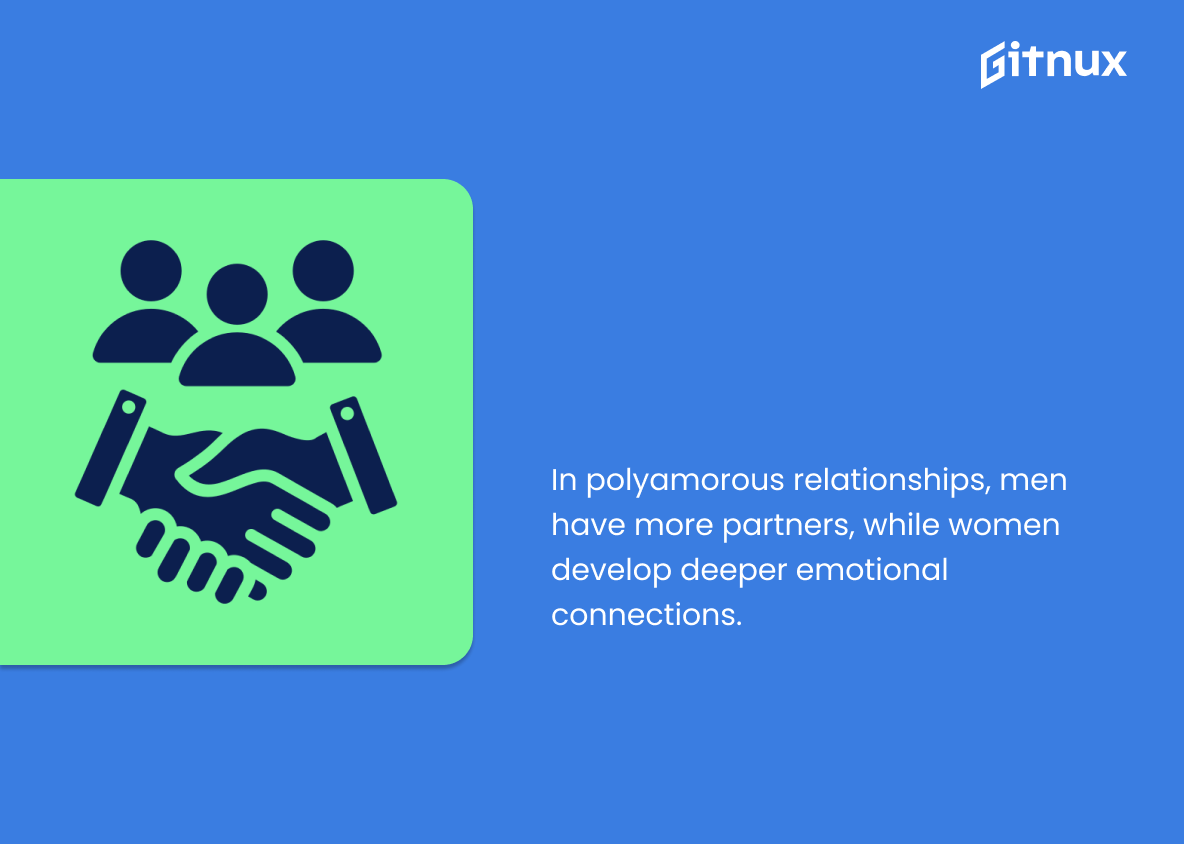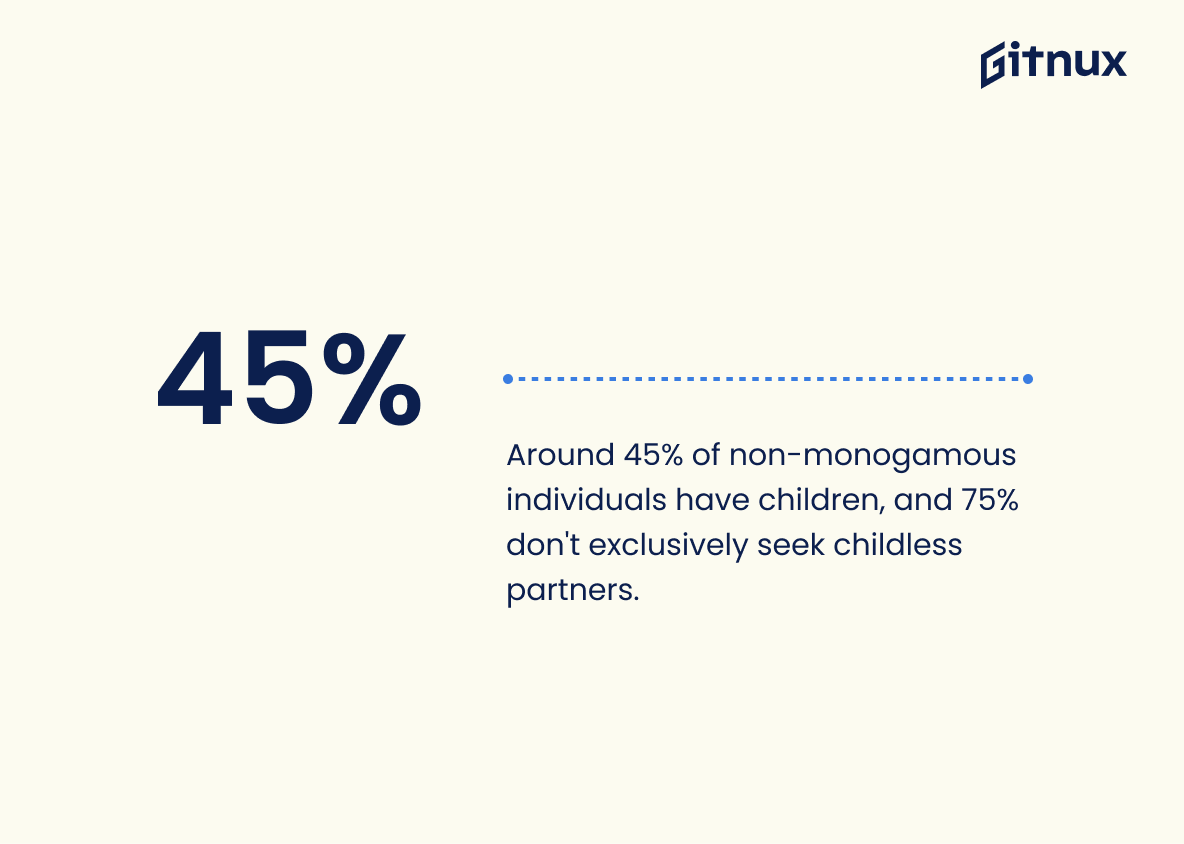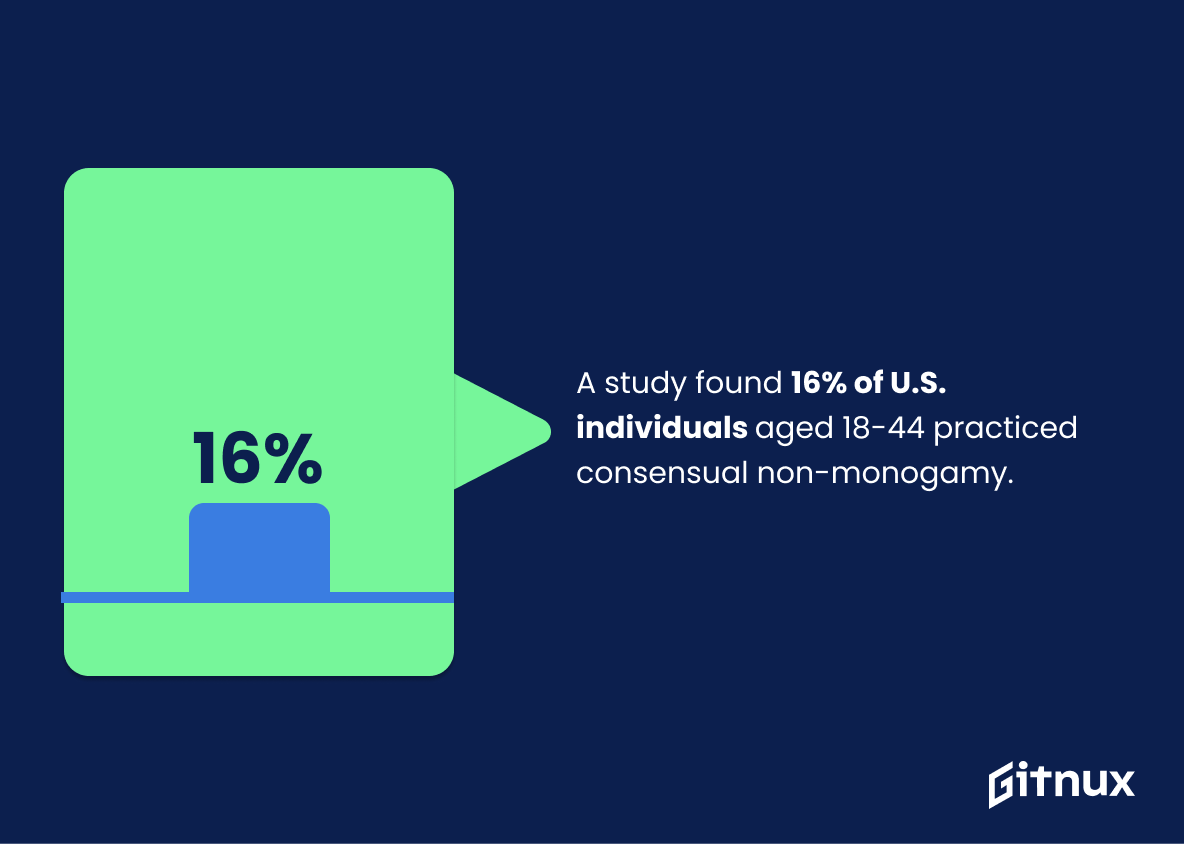The statistics on Monogamy Vs Polyamory are quite revealing. According to a 2015 survey by Avvo, 13% of women and 20.4% of men said polygamy is morally acceptable while only 17% of monogamous relationships last more than two years. A 2012 study revealed that 9.8 million U.S adults have agreed to allow satellite lovers in their relationships at some point in their lives and 30% of women surveyed have had a non-monogamous relationship, compared with 28% for male respondents according to another study from 2019.
In addition, 52 percent of American millennials are open to the idea of non-monogamous relationships as per research conducted by Young & Conducting Research (YCR). Furthermore, polyamorous individuals report having an average 49 sex acts per year whereas monogamous couples reported 51 times per year on average according to Psychology Today’s blog post The Polyamorists Next Door published back in 2013 October issue . Moreover 45 %of people involved in consensual non-monogamy also have children which shows how common this practice has become over time.
These stats show us just how much attitudes towards traditional forms such as marriage or long term committed partnerships are changing across different generations and genders around the world today – something we should all be aware about when it comes down making decisions regarding our own personal life choices.
This statistic serves as a powerful reminder that monogamy is not the only relationship model that is accepted and practiced in the United States. It shows that polyamory is a viable option for many adults, and that it is becoming increasingly popular. This statistic is a testament to the fact that people are open to exploring different types of relationships and that they are willing to take risks in order to find the right fit for them.
Only 17% of monogamous relationships last more than two years.
This statistic serves as a stark reminder of the fragility of monogamous relationships, and how difficult it can be to maintain a successful long-term relationship. It highlights the importance of understanding the complexities of monogamy and the need to be aware of the potential pitfalls that can arise. It also serves as a reminder that polyamory may be a viable alternative for those who are looking for a more sustainable relationship.
Monogamy vs Polyamory Statistics Overview
In a study, polyamorous people reported a higher satisfaction in their relationships than monogamous people in four areas: sexual satisfaction, relationship satisfaction, communication, and jealousy management.
This statistic is a powerful indicator of the potential benefits of polyamory compared to monogamy. It suggests that polyamorous people may have an advantage when it comes to relationship satisfaction, communication, and managing jealousy. This could be an important factor for people considering whether to pursue a monogamous or polyamorous relationship. The statistic provides evidence that polyamory may be a viable option for those looking for a fulfilling relationship.
A study found that 65% of polyamorous people identify as bisexual, followed by 23% as heterosexual, and 12% as homosexual.
This statistic is significant in the context of a blog post about Monogamy Vs Polyamory Statistics because it provides insight into the sexual orientation of polyamorous people. It shows that the majority of polyamorous people identify as bisexual, followed by heterosexual and then homosexual. This information can be used to further explore the differences between monogamous and polyamorous relationships, and how they may be affected by sexual orientation.
A 2016 study reveals that 20% of Britons have had some involvement in a non-monogamous relationship.
This statistic is significant in the context of a blog post about Monogamy Vs Polyamory Statistics as it provides a snapshot of the current state of relationships in Britain. It shows that a significant portion of the population has had some experience with non-monogamous relationships, indicating that polyamory is becoming increasingly accepted in the UK. This statistic can be used to illustrate the growing trend of polyamory and the changing attitudes towards it.
A large-scale survey found that 15-28% of heterosexual married Americans and Canadians have had at least one extramarital affair.
This statistic serves as a stark reminder that monogamy is not always the norm, even in societies where it is widely accepted. It highlights the fact that extramarital affairs are not uncommon, and that monogamy is not necessarily the only option for couples. This statistic is important in the context of a blog post about Monogamy Vs Polyamory, as it provides evidence that monogamy is not always the only option for couples.
Participants in non-monogamous relationships reported higher levels of trust and lower levels of jealousy compared to their monogamous counterparts.
This statistic is significant in the context of a blog post about Monogamy Vs Polyamory Statistics, as it provides evidence that non-monogamous relationships can be just as healthy and trusting as monogamous ones. It suggests that people in non-monogamous relationships experience higher levels of trust and lower levels of jealousy, which could be beneficial for those considering exploring a polyamorous lifestyle. This statistic could be used to challenge the idea that monogamy is the only way to have a successful relationship.
A study found that men in polyamorous relationships are more likely to have multiple partners, while women in polyamorous relationships are more likely to have deep emotional connections with multiple partners.
This statistic is significant in the context of a blog post about Monogamy Vs Polyamory Statistics because it highlights the differences between the two relationship styles. It shows that men in polyamorous relationships tend to prioritize having multiple partners, while women in polyamorous relationships prioritize having deep emotional connections with multiple partners. This information can help readers understand the nuances of polyamory and how it differs from monogamy.
Couples exploring polyamory spend more time talking about their relationships than monogamous individuals.
This statistic is significant in the context of a blog post about Monogamy Vs Polyamory Statistics because it highlights the importance of communication in polyamorous relationships. It suggests that couples who explore polyamory take the time to discuss their feelings and expectations, which is essential for any relationship to be successful. This emphasizes the need for open and honest communication in any relationship, regardless of its structure.
About 45% of non-monogamous people have children, and a majority (75%) do not specifically look for partners without children.
This statistic is significant in the context of a blog post about Monogamy Vs Polyamory Statistics because it highlights the fact that non-monogamous people are just as likely to have children as monogamous people, and that the majority of non-monogamous people do not actively seek out partners without children. This indicates that non-monogamous relationships can be just as successful and fulfilling as monogamous ones, even when children are involved.
A study found that 16% of people in the United States aged 18-44 had engaged in consensual non-monogamy at some point in their lives.
This statistic is a powerful indicator of the prevalence of consensual non-monogamy in the United States. It shows that a significant portion of the population has chosen to engage in this type of relationship, which is a testament to the growing acceptance of polyamory and other forms of non-monogamous relationships. This statistic is an important piece of evidence in the discussion of monogamy versus polyamory, as it provides a tangible example of the increasing popularity of non-monogamous relationships.
Conclusion
The statistics presented in this blog post demonstrate that consensual non-monogamy, including polyamory, is becoming increasingly accepted and practiced by people of all genders and sexual orientations. The data shows that a significant portion of Americans are open to the idea of non-monogamous relationships, with many having already engaged in them at some point in their lives. Furthermore, research suggests that those who practice consensual non-monogamy report higher levels of satisfaction than monogamous individuals when it comes to communication, jealousy management and sex life. These findings suggest that more people may be considering alternative relationship models as they seek greater fulfillment from their intimate partnerships.
References
0. – https://www.www.thesun.co.uk
1. – https://www.doi.org
2. – https://www.www.livescience.com
3. – https://www.pubmed.ncbi.nlm.nih.gov
4. – https://www.www.frontiersin.org
5. – https://www.www.tandfonline.com


